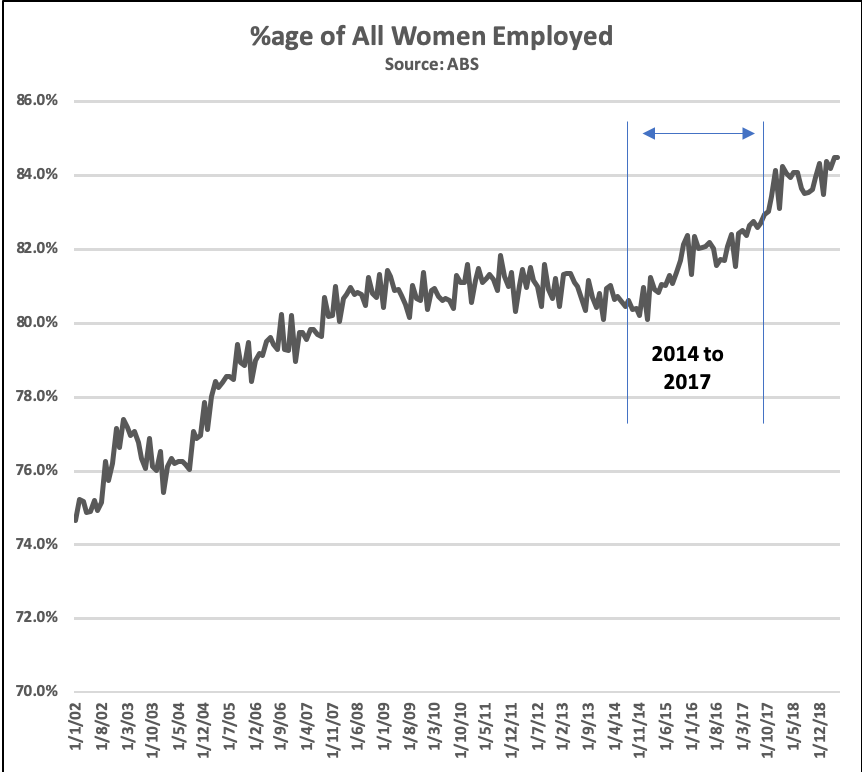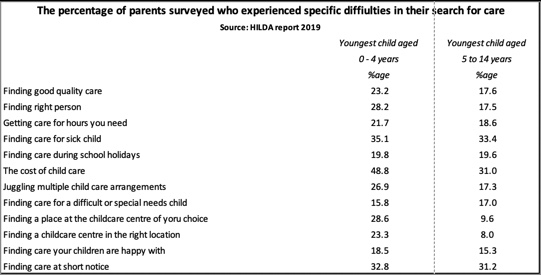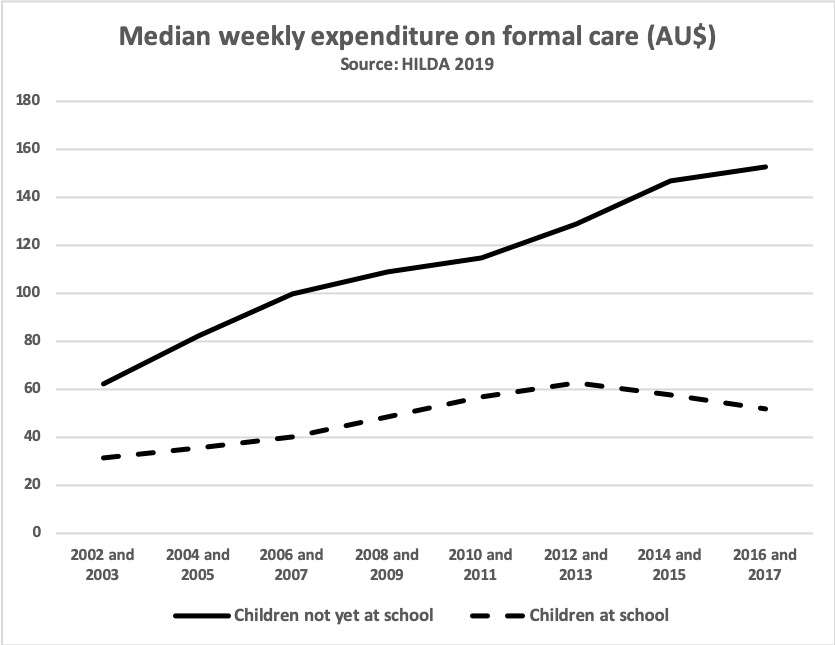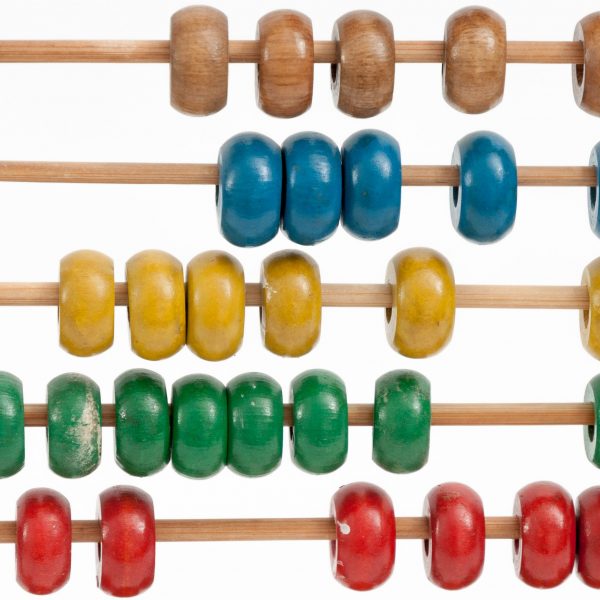Latest HILDA report yields key insights into how Australian parents engage with ECEC

The Department of Social Services have released the 2019 findings from their annual Household, Income and Labour Dynamics in Australia Survey (HILDA) in which considerable emphasis is placed on the topic of paid child care in particular the use of care, the factors that drive families to engage with care, difficulties experienced with care and expenditure on care.
The survey commenced in 2001 and is managed by the Melbourne Institute: Applied Economic & Social at the University of Melbourne who with their fieldwork partners, Roy Morgan Research, gather data every year on the lives of Australian families.
A key differentiator of the HILDA survey is that the same families are surveyed every year to see how their lives are changing over time. The families are questioned on a large range of topics including, but not limited to, household and family relationships, education, income, health and wellbeing, attitudes and values.
The HILDA reports provide a brief statistical analysis of the survey results and is released with a significant lag from the last survey.
Accordingly, the 2019 report includes survey analysis up to 2017 and therefore will not include the impact of the Child Care Subsidy subsidy legislation introduced in July 2018 on parents behaviours.
It is likely, based on previous patterning, that the impact of CCS on families studied, if any, will be noted in reports from 2020 onwards.
Use of paid childcare for coupled parents surged from 2014 to 2017
Since 2001, when the survey began, the percentage of coupled parents who used paid child care for their children who were not yet at school (ie: up to 4 years of age) has trended between 40 per cent and 43 per cent until 2014 when the trend appears to have changed.
From 2014 to 2017 the percentage of coupled parents who used paid child care for their young children increased around 10 percentage points to approximately 53 per cent.
This significant increase in the use of child care services commencing in 2014 corresponds to the point in time when female participation rates across Australia also started to trend higher.

It is also interesting to note that participation rates have continued to climb in 2018 and 2019 suggesting that the percentage of coupled parents using care will also have likely continued to increase.
Other key points highlighted in the usage section of the HILDA report include:
- Single parent families usage of care for their 0 to 4 year old children has remained in a wide but well defined band since 2001
- Parents with young children have a much higher propensity to use child care services than families with older children who are attending school
- Coupled parents with children at school have, like their peers with pre school age children, have also increased their use of care services
Employment status of mother by far largest predictor for use of child care services
For families with children not yet at school the key factor associated with whether their children are receiving some form of care service is whether they work.
By using a mathematical process called logistic regression, the report’s authors have been able to identify the extent that a key factor such as age of the child’s mother or father, where they were born, employment status or education levels impact whether the family is likely to use care services.
The results confirm that if the mother of a child is not working the probabilities that their child will attend care falls by 25.2 per cent for couple families and a massive 28.4 per cent for single mother families.
This is a key insight and highlights just how important the employment status of a family is before child care commitments are made as well as raising concerns that those children from disadvantaged and vulnerable backgrounds are more at risk of not receiving quality early education and care.
This trend will be amplified by the Child Care Subsidy activity test.
Other key highlights in the determinants section of the report include:
- Overseas born families from english speaking countries are more likely to enrol their children in child care services than those born in non english speaking countries
- A fathers employment status is also an important indicator of child care usage with unemployed father’s families less likely to use care
- There is a small positive correlation with mothers age and child care usage. The older the mother is, the more likely a child is to attend an ECEC service. Parents working in part time employment are slightly less likely to use care services
- Parents who are experiencing a decline in health, either perceived or otherwise, are less likely to use childcare services
- Coupled parents of preschool children living in Queensland have a higher probability that they use care than anywhere else in Australia
- Coupled parents with school age children in the Northern Territory have the highest probability of using care
Cost of care for 0 to 4 year old children continues to be dominant concern of families
The HILDA survey includes a section which asks families who use, or who are thinking of using child care services whether they have experienced difficulties with a range of aspects around child care.
In this year’s survey the overwhelming concern of families is the cost of care with 48.8 per cent of families with children aged between 0 and 4 years old reporting difficulties in this area.

The cost of care has been the dominant concern of families since 2011.
Another point of note in this section was a cause for concern expressed by families around the ability to access or secure care for children aged birth to four years of age at short notice.
This response has fallen from around 40 per cent of parents in 2014 to around 32.5 per cent of families in 2017 and could reflect the generalised increase in supply of new services to the sector that commenced in earnest in 2015.
Household expenditure on care after subsidy for 0 to 4 year olds up 145% since 2001
The amount of money families are spending on care for their 0 to 4 year olds has increased by around 145 per cent after taking into account subsidy receipts since 2001.
The extent of the increase has not been matched by the rise in the cost of care for parents of children that are at school and highlights a divergence between long day care and pre school prices trends and those of outside school hour care services.

That being said the report does highlight that the cost per hour of care per hour for 0 to 4 years olds is actually slightly lower than that for school age children. This is also the case with the cost of nanny care which is reportedly more than twice that of pre school and school care services.
For more information and detail on the findings of the 2019 HILDA report please click here.
Popular

Practice
Provider
Quality
Research
Workforce
New activity booklet supports everyday conversations to keep children safe
2025-07-10 09:00:16
by Fiona Alston

Quality
Practice
Provider
Workforce
Reclaiming Joy: Why connection, curiosity and care still matter in early childhood education
2025-07-09 10:00:07
by Fiona Alston

Policy
Practice
Provider
Quality
Research
Workforce
Beyond the headlines: celebrating educators and the power of positive relationships in early learning
2025-07-07 10:00:24
by Fiona Alston













